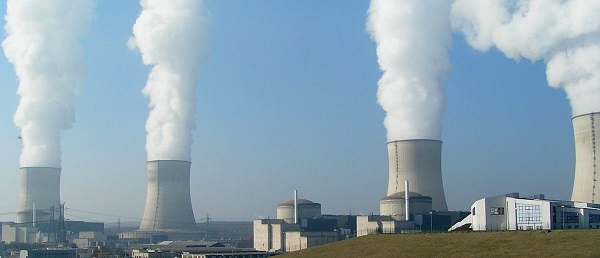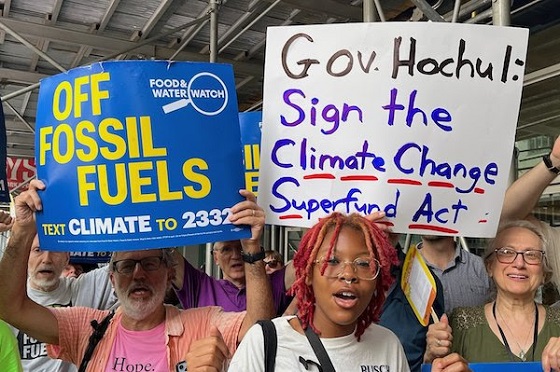Economy
Ottawa’s emissions cap will impose massive costs with virtually no benefit

From the Fraser Institute
By Julio Mejía and Elmira Aliakbari
The resulting reduction in global GHG emissions would amount to a mere four-tenths of one per cent (i.e. 0.004 per cent) with virtually no impact on the climate or any detectable environmental, health or safety benefits.
Last year, when the Trudeau government said it would cap greenhouse gas emissions (GHG) from the oil and gas sector at 35 to 38 per cent below 2019 levels by 2030, it claimed the cap will not affect oil and gas production.
But a report by Deloitte, a leading audit and consulting firm, found that the cap (which would go into effect in 2026) will in fact curtail production, destroy jobs and cost the Canadian economy billions of dollars. Under Trudeau’s cap, Canada must curtail oil production by 626,000 barrels per day by 2030 or by approximately 10.0 per cent of the expected production—and curtail gas production by approximately 12.0 per cent.
According to the report’s estimates, Alberta will be hit hardest, with 3.6 per cent less investment, almost 70,000 fewer jobs, and a 4.5 per cent decrease in the province’s economic output (i.e. GDP) by 2040. Ontario will lose more than 15,000 jobs and $2.3 billion from its economy by 2040. And Quebec will lose more than 3,000 jobs and $0.4 billion from its economy during the same period.
Overall, the whole country will experience an economic loss equivalent to 1.0 per cent of GDP, translating into lower wages, the loss of nearly 113,000 jobs and a 1.3 per cent reduction in government tax revenues. Canada’s real GDP growth in 2023 was a paltry 1.1 per cent, so a 1 per cent reduction would be a significant economic loss.
Deloitte’s findings echo previous studies on the effects of Ottawa’s cap. According to a recent economic analysis by the Conference Board of Canada, the cap could reduce Canada’s GDP by up to $1 trillion between 2030 and 2040, eliminate up to 151,000 jobs by 2030, reduce federal government revenue by up to $151 billion between 2030 and 2040, and reduce Alberta government revenue by up to $127 billion over the same period.
Similarly, another recent study published by the Fraser Institute found that an emissions cap on the oil and gas sector would inevitably reduce production and exports, leading to at least $45 billion in lost economic activity in 2030 alone, accompanied by a substantial drop in government revenue.
Crucially, the huge economic cost to Canadians will come without any discernable environmental benefits. Even if Canada were to entirely shut down its oil and gas sector by 2030, thus eliminating all GHG emissions from the sector, the resulting reduction in global GHG emissions would amount to a mere four-tenths of one per cent (i.e. 0.004 per cent) with virtually no impact on the climate or any detectable environmental, health or safety benefits.
Given the sustained demand for fossil fuels, constraining oil and gas production and exports in Canada would merely shift production to other regions, potentially to countries with lower environmental and human rights standards such as Iran, Russia and Venezuela.
The Trudeau government’s proposed GHG cap will severely damage Canada’s economy for virtually no environmental benefit. The government should scrap the cap and prioritize the economic wellbeing of Canadians over policies that only bring pain with no gain.
Authors:
Economy
Fracking a win-win for workers and the environment in New Brunswick

From the Fraser Institute
By Alex Whalen
Wayne Long, MP for Saint John-Kennebecasis, waded into the long-standing debate on natural gas development in New Brunswick recently, bluntly telling Brunswick News “we need to frack.” Fracking refers to hydraulic fracturing, a process used to recover underground natural gas deposits. Long is right, and it’s important that New Brunswickers understand the economic opportunity inherent in natural gas, while separating fact from fiction when it comes to risks.
Estimates of New Brunswick’s Frederick Brook shale formation, a large underground deposit stretching from roughly Hampton to Sackville, suggest the province sits on approximately 80 trillion cubic feet of recoverable natural gas. At current market prices, the total value of this resource, if fully recovered, ranges from $186 billion to $221 billion. To be sure, such estimates are inherently uncertain and would materialize over a long period of time. However, even the province’s own estimates project $21 billion in investment with a “moderate” level of gas development.
Economic opportunities of this scale are rare and badly needed in New Brunswick. According to a recent comparison of employment earnings, New Brunswickers had the second-lowest median earnings ($32,175) among residents of all 10 Canadian provinces and 50 U.S. states. According to data published by Statistics Canada, wages in oil and gas are the highest among 22 categories of industry in Canada, topping $125,000 per year.
While a modest level of gas development has occurred in New Brunswick around the Sussex area, this resource is largely untapped. One of the main reasons is the moratorium on fracking implemented by the Gallant government in 2014. This ban is not supported by the facts.
In a wide-ranging review of scientific literature published by the Fraser Institute last year, my colleague Kenneth Green found that fracking does indeed carry risks, but these risks are manageable. For example, air pollution and water contamination are important factors that must be closely monitored when fracking is in place. Yet jurisdictions across North America safely recover natural gas while managing these risks. In the process, they grow their economies and boost the incomes of workers.
Moreover, development of natural gas carries environmental benefits, since the emissions produced by the consumption of natural gas are much lower than dirtier fuels such as coal. Another recent study found that if Canada were to double its natural gas production and export the additional supply to Asia as liquified natural gas (LNG) to displace emission-intensive coal in power generation, global emissions could be reduced by up to 630 million tonnes annually . For context, this reduction would be the equivalent of 89 per cent of Canada’s total greenhouse gas emissions.
As New Brunswick’s natural gas opportunity comes back into focus, the facts are clear: the province has an enormous economic opportunity to join the growing number of jurisdictions developing their natural gas resources. Fracking represents a win-win for both workers and the environment in New Brunswick.
Business
Canada’s economy teeming with troubling stats

From the Fraser Institute
It’s striking that Canada has around 100,000 fewer entrepreneurs than two decades ago, even though the population has increased dramatically over that time.
Earlier this week, we marked another Labour Day, and Canada’s job market is losing steam. The slowdown is occurring against the backdrop of unprecedented tariff hikes, persistent geopolitical tensions, and a stagnant Canadian economy. Nationally, employment fell by 40,000 between June and July, with the job losses concentrated in fulltime private-sector positions. Total employment in July was scarcely higher than it was in January (measured on a seasonally adjusted basis). Manufacturing and construction are among the industries that have posted sizable job declines so far in 2025.
The picture is less gloomy on a year-over-year basis. Employment in Canada rose by 1.5 per cent from July 2024 to July 2025. But the month-to-month pace of job creation has been decelerating. Meanwhile, the unemployment rate has been ticking higher. In July, Canada-wide unemployment stood at 6.9 per cent, up from 5.7 per cent 18 months ago. Job vacancy rates have also been falling. Young adults are bearing much of the burden of Canada’s slumping labour market. Oddly, even amid a recession-bound economy, the federal government inexplicably continues to admit large numbers of temporary foreign workers.
Digging deeper into the data—and going back further to the pre-COVID years—yields insight into the dynamics of Canadian job creation. Looking at the period from January 2019 to July 2025 (roughly six-and-a-half years), we can track the trends in three broad employment categories: private-sector payroll jobs, public-sector jobs and the self-employed.
Since the start of 2019, public-sector jobs are up by almost one-quarter, while private-sector payroll positions have increased by 10 per cent. Meanwhile, the number of self-employed Canadians declined over the same period, suggesting a deterioration of the climate for entrepreneurship in the country. That’s troubling.
Entrepreneurs and startup businesses are the lifeblood of a dynamic market economy. Indeed, economists recognize that a key marker of a thriving economy is a healthy rate of business formation. New businesses are an important source of innovation and fresh ideas. They also help to inject competitive vigour into both local markets and the wider economy—something that’s clearly necessary in Canada, given years of subdued business growth and the cartelization of large swathes of our economy. Accelerating business formation should be a top priority for governments at all levels. Supporting the commercial success of existing young firms is also crucial, given the outsized contributions they make to the overall economic growth process.
For entrepreneurs and others who invest in startup companies, the risk of failure is ever present. Many new businesses don’t survive. In the goods-producing sector of the Canadian economy, about 70 per cent of new businesses survive for at least five years; in the broad services-producing sector, the rate is lower (56 per cent). Ten-year survival rates are around 50 per cent in goods-producing industries and just 35 per cent in service-based industries. Becoming a businessowner/operator is not for the faint of heart.
Canada urgently needs more high-growth businesses. This means building a robust pipeline of new entrepreneurial ventures.
Unfortunately, we have been falling short in this area, with the rate of business startups diminishing. It’s striking that Canada has around 100,000 fewer entrepreneurs than two decades ago, even though the population has increased dramatically over that time.
Canadian policymakers would be wise to ask themselves why entrepreneurship is faltering. Governments should act to modify their tax, regulatory and industrial policies to establish an economic environment that’s more conducive to entrepreneurial wealth-creation and the growth of small and medium-sized businesses.
-

 Bruce Dowbiggin2 days ago
Bruce Dowbiggin2 days agoMic Drop: The Thought Police Are Coming To Take You Away
-

 Crime2 days ago
Crime2 days agoU.S. Missile Strike on Alleged Narco-Boat Tied to Maduro and Ohio Indictment of Chinese Firms Signal Dramatic Escalation in War on Fentanyl
-

 C2C Journal2 days ago
C2C Journal2 days agoCanada’s Health-Care Monopoly is Killing Us
-

 National2 days ago
National2 days agoNDP seemingly learns nothing from electoral collapse as the party sets identity goals for leadership race
-

 International2 days ago
International2 days agoAustralian woman faces $200k penalty for saying men don’t belong in women’s sports
-

 International2 days ago
International2 days agoUS going back to the moon before Trump leaves office
-

 Alberta1 day ago
Alberta1 day agoProminent conservative lawyer in Canada disbarred in ‘vindictive abuse of process’
-

 Alberta2 days ago
Alberta2 days agoTeacher strikes should never happen in Alberta









